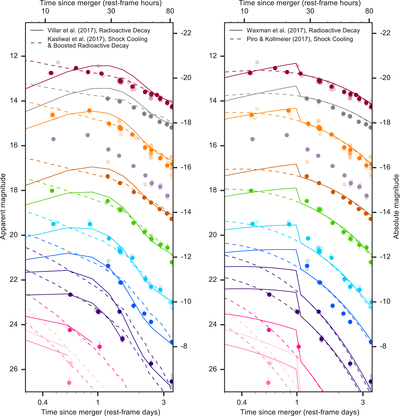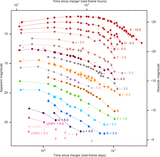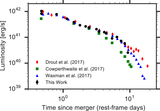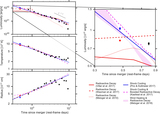Image Details

Caption: Figure 4.
Optical and ultraviolet light curves for the first 3 days after merger. Left: compared to the radioactive decay luminosity model from Villar et al. (2017) and the combined shock cooling—boosted radioactive decay model from Kasliwal et al. (2017). Right: compared to the single-component radioactive decay luminosity model from Waxman et al. (2017) and the shock cooling model from Piro & Kollmeier (2017). The Villar et al. (2017) pure radioactive decay model is more consistent with the ∼1 day rise seen in the optical bands, but the other models are more consistent with the subsequent decline. The Waxman et al. (2017) model is consistent with both the rise and decline but introduces a sharp jump in the light curves, which in reality may be smoother. Observations at earlier times, where the models differ more substantially, could provide stronger constraints for future events. Colors and filter shifts are the same as in Figure 1.
Copyright and Terms & Conditions
© 2018. The American Astronomical Society. All rights reserved.







